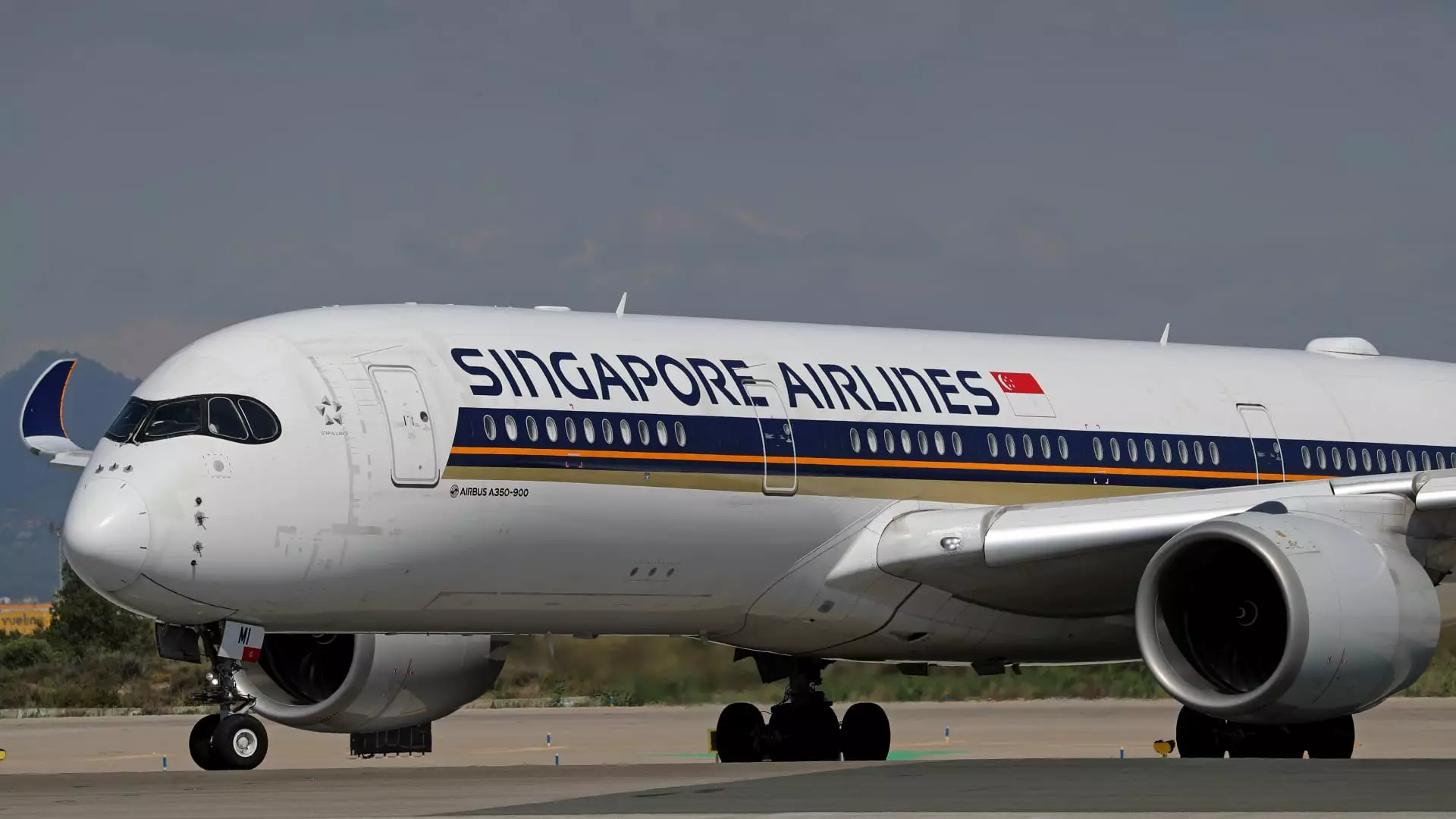Singapore Airlines has recently released its financial results for the first half of the fiscal year, which have raised concerns among investors. The flagship carrier of the city-state reported a staggering 48.5% decline in net profit, dropping to 742 million Singapore dollars (approximately $559.12 million) compared to SG$1.44 billion during the same period last year. This dramatic drop is attributed to a combination of lower yields and heightened competition in the aviation market, sparking a notable reaction in the stock price.
As the markets opened following the announcement, shares of Singapore Airlines plunged by as much as 6.2% before partially recovering to a decrease of around 3.57%. Despite an uptick in overall revenue, which rose by 3.7% to SG$9.5 billion, the significant downturn in profitability has left analysts and shareholders questioning the airline’s future in a competitive landscape.
The decline in operating profit was even more pronounced, with the airline’s operating income plummeting by 48.8% to SG$796 million from SG$1.55 billion a year prior. The company cited increased competition in key markets and expanded capacity as primary factors behind this downturn. The Chief Commercial Officer, Lee Lik Hsin, articulated the challenges faced, mentioning that while passenger traffic grew by 7.9% year-on-year, this was overshadowed by a more aggressive capacity expansion of 11%, negatively impacting the passenger load factor—a crucial metric for airline efficiency—which fell by 2.4 percentage points to 86.4%.
The need for airlines to reclaim their market share has resulted in a race to restore pre-Covid capacity levels, a factor that has exacerbated the pressure on yields and profitability. Although passenger numbers are up, the growth in supply appears to be outpacing demand, reflecting a shifting equilibrium in the market.
In response to these challenges, Singapore Airlines has committed to maintaining its capacity growth despite the competition. This strategic decision reflects a determination to capitalize on the expected robust demand for air travel in the latter half of the financial year. The company aims to navigate the competitive landscape while still focusing on growth and expansion.
On a positive note, Singapore Airlines has embarked on a significant SG$1.1 billion cabin retrofit program for its long-range Airbus A350 jets, with the intention of enhancing passenger experience and operational efficiency. The first retrofitted aircraft is anticipated to enter service by 2026, with the project expected to be completed by 2030. This long-term investment may bolster the airline’s offerings and potentially improve its market position in the coming years.
As the airline industry continues to evolve post-pandemic, Singapore Airlines will need to adapt to ongoing competitive pressures while strategically managing its capacity and maintaining profitability. Stakeholders and analysts alike will be closely monitoring how these initiatives unfold amid the challenges presented by the current economic climate.

